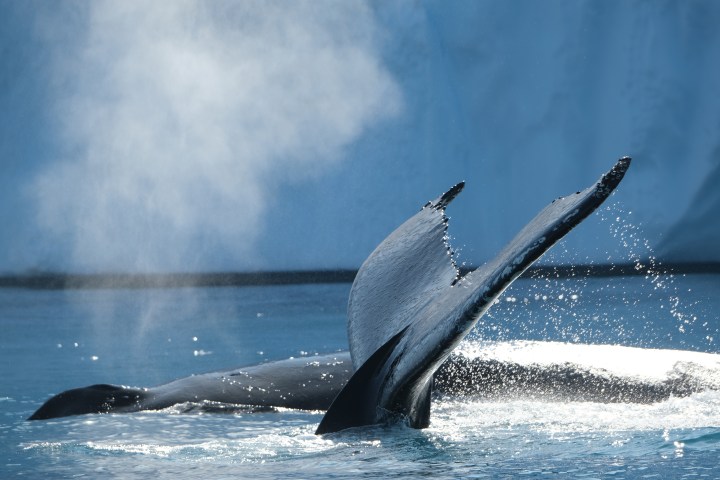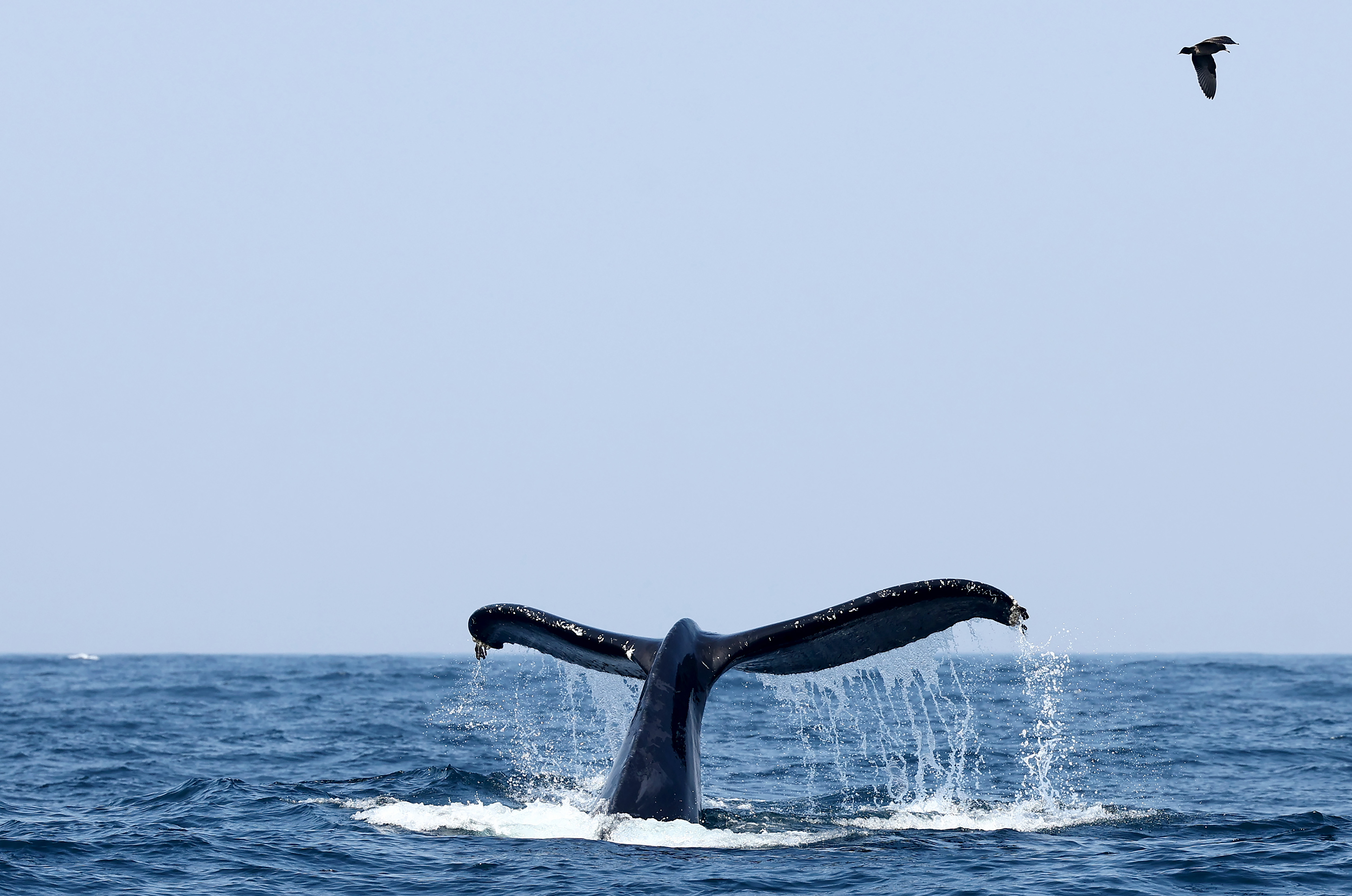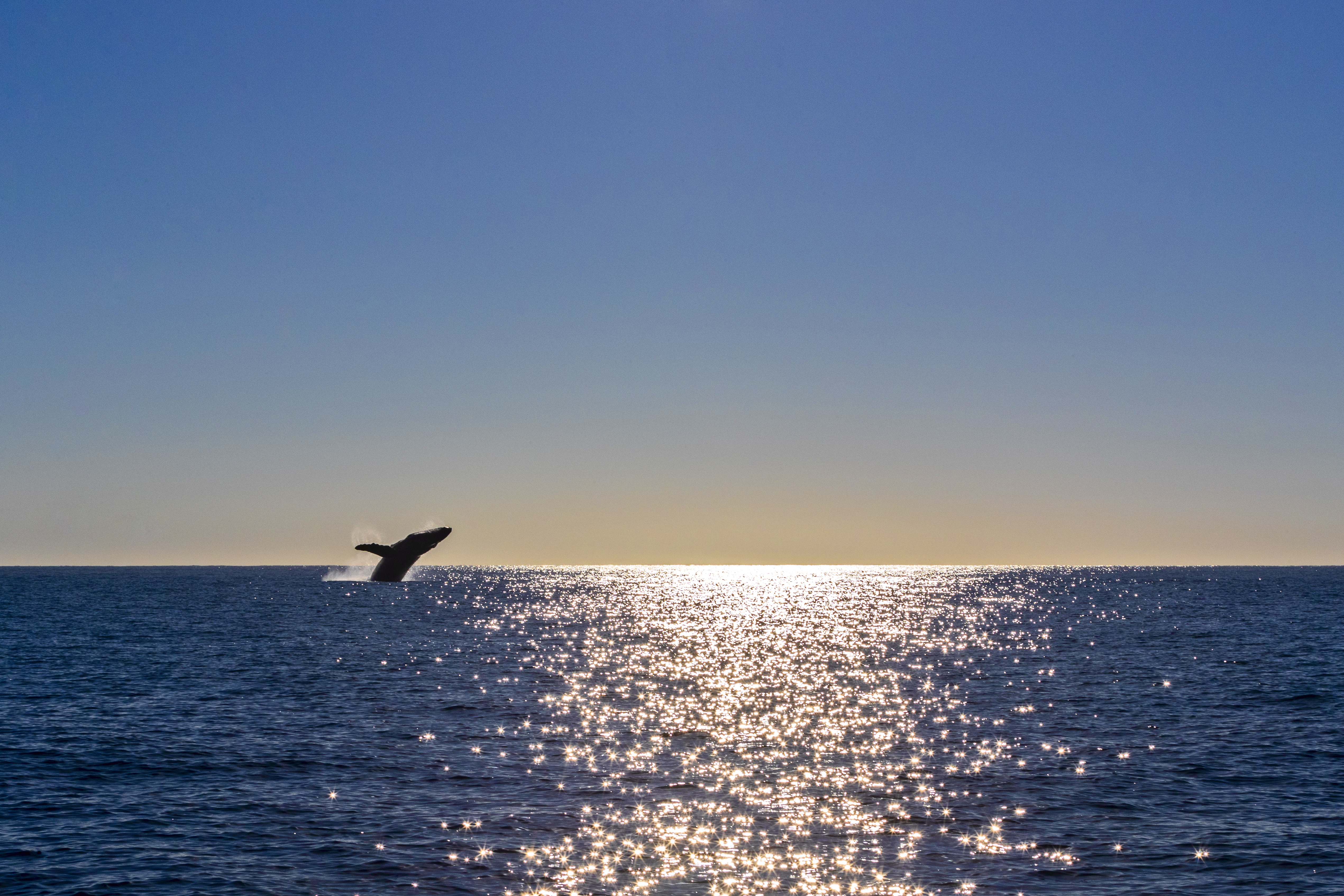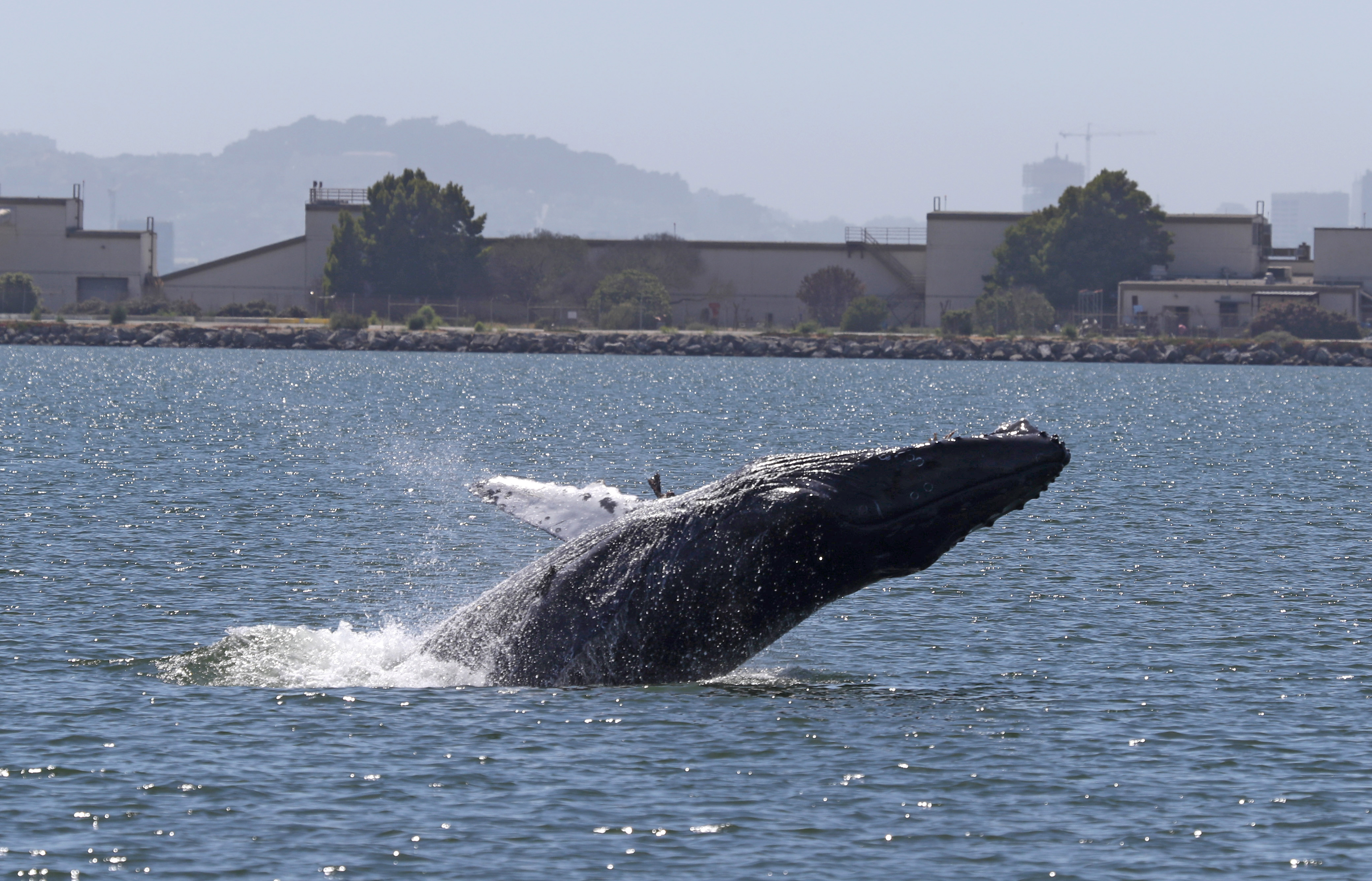The Conversation
Sex, birth and whalesong: life on the humpback highway

There’s so much we still don’t know about whales. Here’s three amazing new things we’ve learnt about whales lately: how humpback whales have sex and give birth – and how baleen whales sing underwater.
Thousands of bus-sized humpback whales are currently on their way to Australian waters. They’ve spent the summer feeding in the cold waters of Antarctica before heading north to breed and calve.
You can see humpback whales as they travel along Australia’s east and west coasts. These migratory routes are generally referred to as the “humpback highway”.
While humpbacks are the most sighted whale species in Australian waters, we actually know very little about them. In the past few years, however, we have learned more about how humpback whales have sex and give birth, and how baleen whales – a group of toothless whales that includes humpbacks – make sound.

A humpback whale’s tail is visible as it feeds in the Pacific Ocean, in a marine area which is currently recommended for exclusion from the proposed Chumash Heritage National Marine Sanctuary along California’s Central Coast, on September 21, 2023 near Morro Bay, California. (Photo by Mario Tama/Getty Images)
Whale sex observed for the first time
Until recently, scientists knew relatively little about how humpback whales reproduce. Scientists in the warm tropical waters of Hawaii had documented the occasional extruded (exposed) whale penis. But never before had scientists seen whales actually having sex.
Such a moment was captured on camera in Maui for the first time in January 2022 and published this year. It wasn’t just the first observation of humpback whale sex – it was the first observation of sex between two males.
In this case, one of the male whales was injured and in poor health, while the other, a “seemingly healthy counterpart”, appeared to mate with him. Obviously, two males can’t produce offspring but this does provide insight into the mechanics of how a male and female might reproduce.
Perhaps male-to-male copulation is a way of practising reproductive behaviours, or maybe it’s some form of social activity.
First-Ever Photos Of Humpback Whale Sex Involve Two Maleshttps://t.co/kd0HKXZruK
— IFLScience (@IFLScience) February 28, 2024

A humpback whale jumps during a whale-watching tour on January 10, 2021 in Cabo San Lucas, Mexico. (Photo by Alfredo Martinez/Getty Images)
First sighting of a humpback whale birth
Only a handful of near-complete humpback whale births have previously been caught on film. The footage usually involved a tiny tail appearing as the baby emerges from the mother’s body. Never before had the whole event been captured from start to finish: observations of mum prior to calving, the calf coming out of the mum, and the period immediately after the birth.
But in March 2021, footage of the first complete humpback whale birth was captured – again, in Hawaiian waters.
This spectacular moment was captured underwater and from the air. It began with a hot pursuit by more than ten whales, believed to be male humpbacks. This is known as a “heat run”.
In this case, the single female being chased by many males, all competing for her attention, was pregnant. It’s not unusual for male humpback whales to show interest in pregnant females or new mothers with calves. When males accompany a female and her calf, this generally is known as a mother-calf with escort.
But the males in this chase soon turned into spectators, as the mother appeared to be close to giving birth – a small tail was emerging from her body. The lead male was then filmed deliberately blowing bubbles underneath her. I’ve never seen this before, other than during feeding activities or the occasional bubble release.
Some humpback whales are known to blow bubbles to help catch food. But we are yet to understand the purpose of bubble-blowing during whale birth. Maui-based whale researcher Rachel Cartwright suggests it’s like the mum whale is “getting a little spa or massage”.

A humpback whale breaches in a lagoon on June 04, 2019 in Alameda, California. (Photo by Justin Sullivan/Getty Images)
Learning how whales make sound
In the last of three big new insights from the humpback whale world, new research has brought us closer to learning how sound is produced by baleen whales, including humpbacks.
We already knew that humpback whales can make sound underwater because they recycle air and can go for periods without breathing. Now we are learning more about precisely how they do this.
As with most whale studies, seeing the behaviour in action is not always possible. Fortunately, a new research paper published this year found baleen whales have “evolved unique laryngeal structures” (voice boxes) for sound production. By studying fresh samples of whale voices boxes from stranded humpback, minke and sei whales (all baleen/toothless whales), researchers found a fatty pad at the back of the voice box that helps to make sound by vibrating.
The ability of baleen whales to produce low-frequency sounds enables their calls to travel over long distances. This means baleen whales can have a conversation with each other across the sea. They can also call out to let other whales know they are around or call to find each other.
Unfortunately, we humans tend to make the ocean so loud that whales sometimes struggle to hear each other. This is why, when examining humanity’s impacts on oceans, it’s important to consider the consequences we can’t see, such as sound, as well as the problems we can see, such as plastic pollution.
What’s next in the whale world?
There is so much we’re yet to learn about our humpback whale visitors. Humpback whales live most of their lives underwater, largely out of sight. Being long-lived mammals, with a life expectancy of 50 years or longer, the whales we see this year are likely to take many more round trips along the humpback highway.
Perhaps our next great discovery will be learning what they are saying, or how they know where to go on their incredible journey from Antarctica to Australia. DM
This story was first published in The Conversation. Vanessa Pirotta is a Postdoctoral Researcher and Wildlife Scientist at Macquarie University.

















 Become an Insider
Become an Insider
Spectacular creatures… what a thrilling video!
This article had me in tears! What a wonderful word we live in.